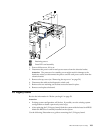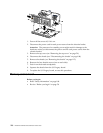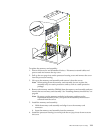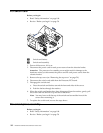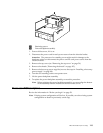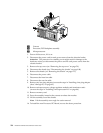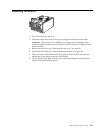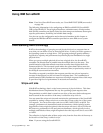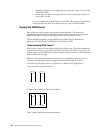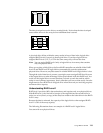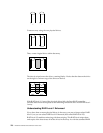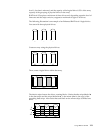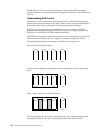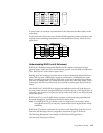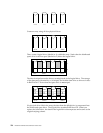
© Copyright IBM Corp. 1999 117
Using IBM ServeRAID
Note: For a list of ServeRAID error codes, see “ServeRAID POST (ISPR) error codes”
on page 161.
The following information is for configuring an IBM ServeRAID-3H, ServeRAID-
3HB, or ServeRAID-3L. These high-performance, redundant array of independent
disk (RAID) controllers are ideally suited for data-storage environments that require
superior performance, flexibility, and reliable data storage.
You also can use the configuration and reference information in this chapter to
configure the IBM ServeRAID controllers provided on some IBM server system
boards.
Understanding RAID technology
RAID is the technology of grouping several physical drives in a computer into an
array that you can define as one or more logical drives. Each logical drive appears to
the operating system as a single drive. This grouping technique greatly enhances
logical-drive capacity and performance beyond the physical limitations of a single
physical drive.
When you group multiple physical drives into a logical drive, the ServeRAID
controller can transfer data in parallel from the multiple drives in the array. This
parallel transfer yields data-transfer rates that are many times higher than with
nonarrayed drives. This increased speed makes the system better able to meet the
throughput (the amount of work in a given amount of time) or productivity needs of
the multiple-user network environment.
The ability to respond to multiple data requests provides not only an impressive
increase in throughput, but also a decrease in response time. The combination of
parallel transfers and simultaneous responses to multiple requests allows disk arrays
to provide a high level of performance in network environments.
Stripe-unit size
With RAID technology, data is striped across an array of physical drives. This data-
distribution scheme complements the way the operating system requests data.
The granularity at which data is stored on one drive of the array before subsequent
data is stored on the next drive of the array is called the stripe-unit size.
You can control the stripe-unit size and maximize the performance of the ServeRAID
controller by setting a stripe-unit size to a value that is close to the size of the system
I/O requests. You can set the stripe-unit size to 8 KB, 16 KB, 32 KB, or 64 KB. For
example, performance in transaction-based environments, which typically involve
large blocks of data, might be optimal when the stripe-unit size is set to 32 KB or 64
KB; however, performance in file and print environments, which typically involve
multiple small blocks of data, might be optimal when the stripe-unit size is set to 8 KB
or 16 KB.
The collection, in logical order of these stripe units, from the first drive of the array to
the last drive of the array, is called a stripe.
Note: If you are using the ServeRAID-3L:



